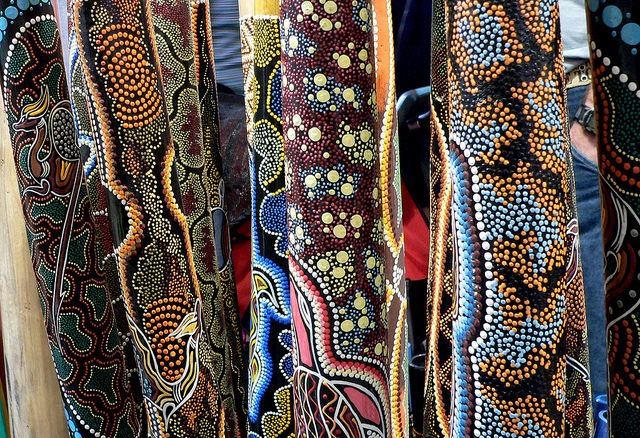Whatever you think of the specifics, it is fair to say the 2014/15 Federal Budget was one of the most divisive and contentious in recent memory. If all or even most of the provisions had passed both Houses of Parliament, then there would have been some very drastic changes to the Australian social and economic system. Unemployment benefits would have been lower and taken much longer to receive. University would have been more expensive. Single parents would have been much worse off. Paid Parental Leave was to be expanded dramatically.
But these and many other measures didn’t pass, and most have been shelved. Tony Abbott and Joe Hockey, who were Prime Minister and Treasurer at the time, are no longer in their positions. Many other key Ministers have left or are in different roles. One exception is Nigel Scullion, who is still the Minister for Indigenous Affairs.
The Indigenous Advancement Strategy
One area that did experience dramatic change from the 2014/15 budget was Indigenous Affairs. The centrepoint of this change was the introduction of the Indigenous Advancement Strategy, or IAS. The stated aim of the IAS was to consolidate the many different Indigenous policies and programmes delivered by the federal Government into five overarching programmes. The new programme streams are:
- Jobs, Land and Economy
- Children and Schooling
- Safety and Wellbeing
- Culture and Capability
- Remote Australia Strategies
These programme streams are intended to support the Government’s Closing the Gap strategy, which has seven targets related to health, education, and employment. Streamlining and prioritising is one thing. But the IAS and the 2014/15 budget also witnessed an overall reduction in the funding for Indigenous Affairs, to the tune of more than half a billion dollars. A number of long-standing Indigenous organisations, such as the National Congress of Australia’s First Peoples, lost considerable funding that was not returned in the 2015/16 budget.
The IAS has been reviewed by the Department of Prime Minister and Cabinet, with a focus mainly on funding guidelines. A more detailed review is currently being carried out by The Australian National Audit Office.
There is, therefore, considerable uncertainty as to what we might expect from the 2016/17 Budget for the IAS and Indigenous Affairs in general. This uncertainty is heightened by the fact that, apart from some very strong statements in favour of Constitutional Recognition, we don’t know a lot about the Prime Minister Malcolm Turnbull’s views on Indigenous policy.
The broader budget impact
One thing we do know is that Aboriginal and Torres Strait Islander peoples are as affected by other aspects of the budget that are not specifically concerned with Indigenous policy, as they are by many Indigenous-specific programs. Indeed, because of the Indigenous population’s socioeconomic, geographic and demographic distribution, many other budget measures disproportionately affect the Indigenous population.
The decisions that the Government makes that affect housing affordability will disproportionately affect Indigenous Australians, who we know struggle in the property market either as renters or as potential home owners.
School funding is likely to have a particular effect on Indigenous kids as they are more likely to attend public schools than non-Indigenous children, and in particular public schools that don’t have other funding sources.
Indigenous Australians require a greater level of primary health care, so any co-payments or rationing will affect Indigenous Australians more than others.
The environment and land management is clearly important to Indigenous communities, so the way in which the Government deals with climate change and other environmental risks will have a disproportionate affect.
A final example is disability funding, with strong evidence to suggest that Indigenous Australians are much more likely to have a disability, or care for someone with a disability.
What is the evidence – and what is needed?
We might hope that Indigenous policy in the 2016-17 Budget will follow four principles:
- Genuinely take into account the needs and aspirations of Indigenous peoples, and work with them to set goals and priorities;
- Build on solid evidence, as the costs of getting it wrong are much higher for those who are particularly vulnerable;
- Have a long-term focus, which is all to often missing in Indigenous Affairs; and
- Build on Indigenous strengths, rather than just mitigating deficits.
First, and perhaps most importantly, the Indigenous population is growing, both in absolute terms and relative to the non-Indigenous population, from around 670,000 in 2011 to over a million projected in 2031. This population growth needs to be carefully taken into account, as any fixed expenditure will need to be spread over a greater number of people, or expenditure will need to increase.
Moreover, that population growth is concentrated in urban areas. The Government has seven ‘Closing the Gap’ targets, including life expectancy. There will be no chance of meeting these targets if the policy focus remains on remote areas. The Indigenous population is young, but it is aging. Retirement saving, disability, and aged care will all need a greater Indigenous focus into the future.
The focus of the Closing the Gap campaign is health. And health certainly does affect all other priorities. Kids can’t go to school if they aren’t healthy.
There are large returns to investment in education, especially early childhood education. But, it needs to be of high quality and take into account what the families of Indigenous children want from their education.
Indigenous businesses need support, though this needs to be done carefully to avoid entrenching negative stereotypes. It is true that Indigenous businesses are key and growing employers of Indigenous workers and so this is a promising direction for policy.
Exposure to the criminal justice system is costly. The costs are mostly borne by State and Territory Governments, but the Commonwealth does have a role to play.
Finally, Indigenous policy needs to take into account the needs and aspirations of the Indigenous population. This needs to reflect the fact that some Indigenous voices are heard much louder than others. When Indigenous Australians are asked whether they can have a say within their community, the young, females, and those with low levels of education are much less likely to say they can have a meaningful say. The 2016/17 Budget needs to reflect the views of all Indigenous Australians in setting priorities.





Recent Comments